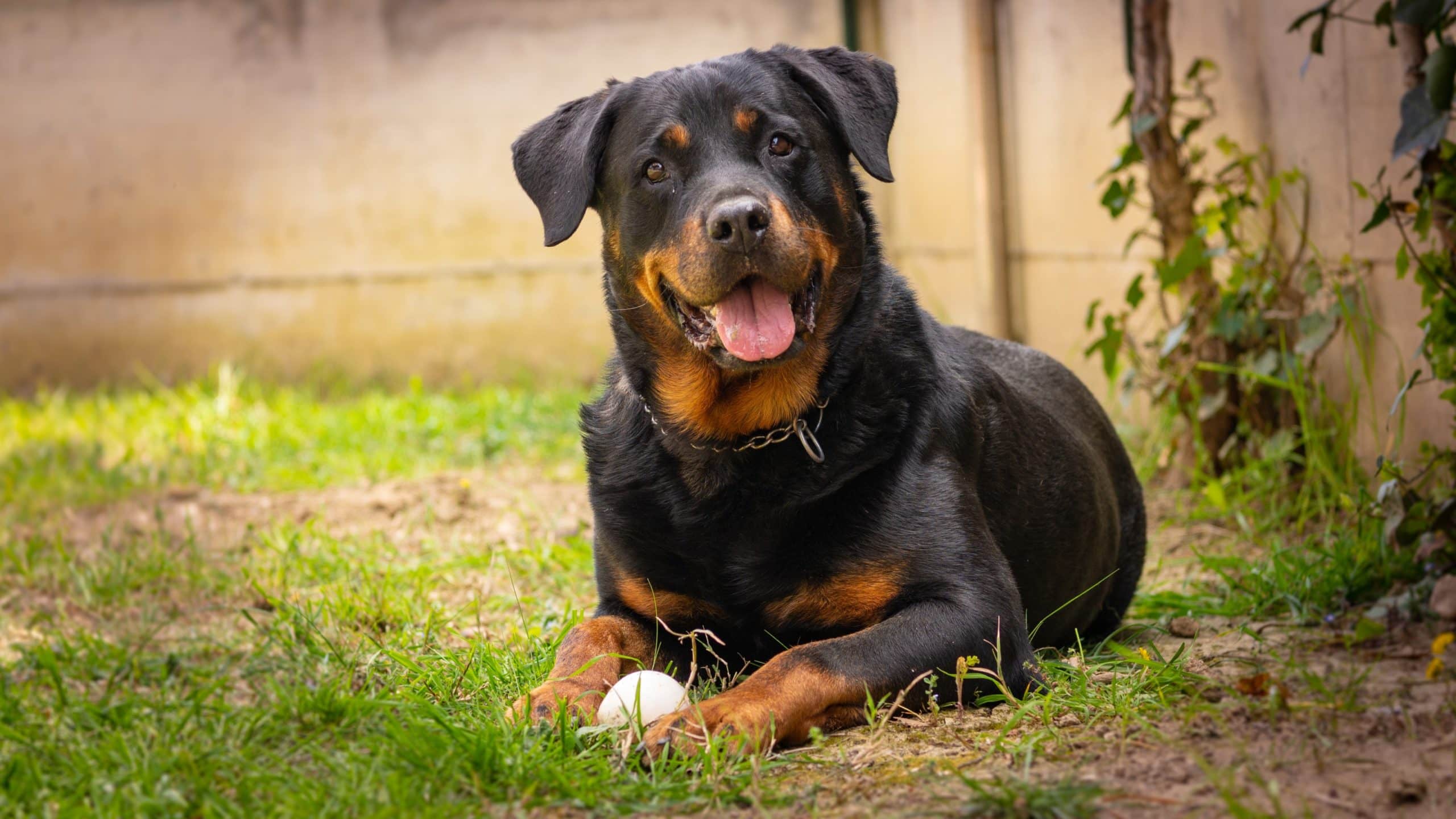[ad_1]
Even when we feel as in sync with our dog’s body language as any owner can hope to be, sometimes we wish our Rottweilers would just come out and say what they mean. The closest we can get is interpreting vocalizations, but even those can be ambiguous or downright contradictory to what we think they mean. As a perfect example, growling is one action that Rottweilers may use to show they’re happy!
Something that should be straightforward becomes all too confusing and counterintuitive. If you’re tired of trying to figure out your dog’s feelings, wants, or needs, we’ll discuss the common sounds Rottweilers make and their potential meanings.

Rottweiler Sounds and Their Meanings
Rottweilers are exceptional watchdogs, but they reserve their deep bark to warn of threats and ward them off. That doesn’t mean they aren’t vocal. Many owners are surprised when they discover their Rottweiler’s chattiness and the diverse sounds they’ll give off when playing, cuddling, and hanging out with their loved ones.

Growling Can Indicate Happiness
Sometimes called the “Rottie rumble” or their “purr,” a Rottweiler’s low growl can be a sign of enjoyment or playfulness. You’ll typically hear this unique vocalization when playing with your dog, giving tummy rubs, or doing anything they like. Although it may sound strangely aggressive, there are ways to tell whether their growls are positive or negative.
Happy growls generally accompany relaxed behavior and body language, and a lack of bared teeth. If you hear your Rottie rumble while playing and stop their growl when the fun stops, you can bet they’re making the noise out of happiness.
When Growling Indicates Aggression
Rottweilers have had a powerful instinct to protect since their origins in Rottweil, Germany, where they pulled meat carts to and from the market while protecting owners, their earnings, and their property.
Today’s pets may be more relaxed, but the desire to keep family safe is ever-present. Keeping the peace depends on interpreting your dog’s signals appropriately. Discerning when a growl signals happiness and when it’s menacing can be especially useful in avoiding trouble. If you notice any of the following signs accompanying the growling, your Rottweiler is likely feeling aggressive:
- Stiff body
- Raised tail, rapid wagging with no body movement
- Bared teeth
- Raised hackles
- Ears stiff and forward
Considering the context will reveal the cause of your Rottie’s growling behavior. They may be resource-guarding their possessions, protecting their territory, or showing uneasiness about someone.
Talking with your vet and managing your dog’s environment and enrichment routine may be necessary to ensure the only growls you hear are of the playful variety.

Barking Can Mean Excitement
The Rottweiler’s formidable bark is one of their most defining and functional features as a protection dog. If someone approaches their home uninvited, the loud, steady vocalizations serve as a fair warning to back off.
In other instances, barking can be another indicator of a good time. Rather than making a low, agitated sound, Rotties may emit a high-pitched bark with an accompanying full-body tail wag when excited, welcoming, and playful. You might hear this excitement when you walk in the door or play your dog’s favorite games.
Whining Is a Plea for Attention
Whining is one of the most common sounds a Rottweiler will make when they don’t have enough stimulation. Puppies are often the most vocal, but adults will also sit near their owners, stare, and whine in agitation, sometimes tossing in a few attention-grabbing barks.
Providing enrichment and exercise is often the answer to frequent whining. If your dog is otherwise healthy, ensure you provide 1 ½–2 hours of daily physical activity. Beyond that, give them plenty of mental stimulation during their time indoors.
Toys like puzzle feeders, snuffle mats, and durable chews for power chewers will keep your Rottie happy, reducing the risk of boredom or anxiety and the resultant calls for attention.
Whining Can Also Indicate Pain or Fear
Context and other physical or behavioral signs may reveal your dog’s whining isn’t attention-seeking but a sign of distress. Is the whining accompanying a limp or a closed-off, crouched body position? Is your dog withdrawing rather than advancing?
Habits like these may mean your dog is in pain. If you notice any environmental stressors, like loud noises or unfamiliar people, whining and whimpering could also mean your Rottweiler is afraid.


Final Thoughts
Any Rottweiler owner will be quick to note how special their dogs are. Loyal, loving, and fearless to a fault, they’re among the most beloved family dogs and truly unique characters. Although they may not have the Chihuahua’s chattiness or the Husky’s vocal range, Rotties have a distinct language that owners will be wise to learn and overjoyed to understand.
Featured Image Credit: nicolas.fontana, Shutterstock
[ad_2]
Source link
